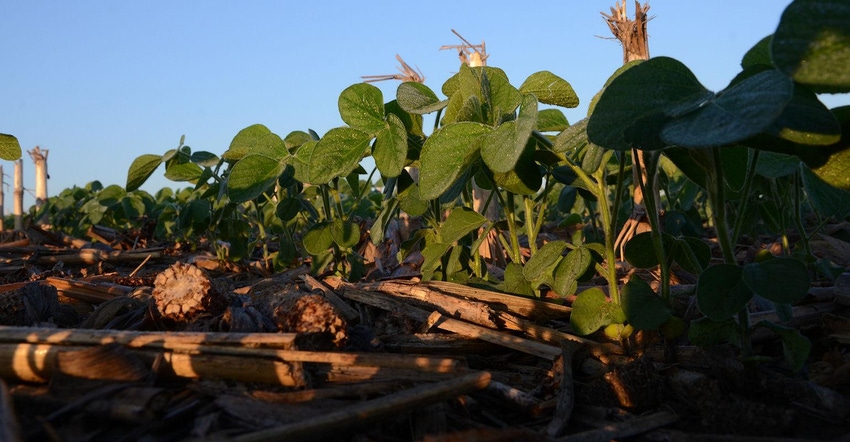September 2, 2020

Save money and time this fall by planning for no-till soybean planting next spring. Many farmers are moving away from tillage, due to a host of detrimental environmental factors involved with tillage as well as reducing cost of soybean production.
Soybean yields are not impacted by no-tilling. There is no need to spend labor and fuel incorporating the corn residue. Additionally, spring tillage operations are not effective for breaking soil compaction. In fact, the opposite happens in normal spring conditions when soil moisture is plentiful. Spring tillage in wetter conditions leads to smearing soil with the tillage knives or sweeps and disking creates a compaction layer while sizing residue.
One of the most important aspects of no-till planting is to ensure the proper function of the planter. Any planter purchased in the last 10 to 20 years can plant soybean seeds into corn residue, especially if the planter has row cleaners and has been properly maintained. Nearly all planters can ensure appropriate down pressure and seed depth placement.
Research from across Iowa shows that soybean yield is not influenced by tillage system. Therefore, no-till planting soybean into corn residue will yield like other tillage systems but also result in high economic returns. Moving to a no-till system can save $15 to $25 per acre in reduced tillage costs.
Using your combine to prepare your residue for spring can help create a uniform seedbed for planting the following season. Non-uniform spreading of corn residue across the harvest width results in uneven warming and drying of the soil. It can also affect planter performance as the planter moves from areas with higher to lower residue amounts.
Other considerations:
Wait for correct soil conditions to plant soybean.
Start small and check planter performance often to gain confidence.
Use row cleaners to move residue but NOT make a trench.
Source: Iowa State University, which is solely responsible for the information provided and is wholly owned by the source. Informa Business Media and all its subsidiaries are not responsible for any of the content contained in this information asset.
About the Author(s)
You May Also Like






